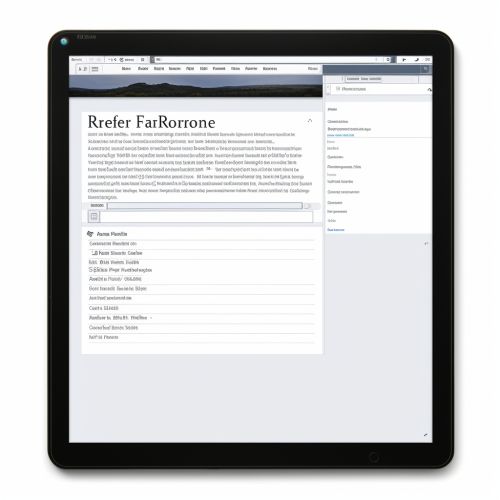Rich Text Format
Introduction
The Rich Text Format (RTF) is a proprietary document file format developed by Microsoft for cross-platform document interchange. It is often used to exchange data between various applications, as it can be read by most word processors. RTF uses the ASCII character set, but can also support text-based data in non-ASCII character sets.


History
Microsoft first introduced RTF in 1987, with the intent of providing a format that could be used across a wide variety of hardware and software platforms. The format was designed to be easy to write, making it accessible for many different types of applications. Over the years, Microsoft has continued to update and expand the RTF specification, adding new features and capabilities to keep pace with evolving technology.
Structure
An RTF file is a plain text file that contains a series of control words, control symbols, and groups. These elements are used to encode formatting information and the actual text of the document. The control words and symbols provide instructions for how to display the text, while the groups are used to organize the control words and symbols into logical units.
Control Words and Symbols
Control words in RTF begin with a backslash (\) and are followed by a letter and then any number of additional letters or digits. For example, the control word \b turns on bold formatting, while \b0 turns it off. Control symbols also begin with a backslash, but are followed by a non-alphanumeric character. For instance, the control symbol \'3f represents the question mark (?) character.
Groups
Groups in RTF are defined by curly braces ({}). A group begins with a left curly brace ({) and ends with a right curly brace (}). Groups can be nested within other groups, allowing for complex formatting structures. Each group can contain any number of control words, control symbols, and other groups.
Advantages and Disadvantages
One of the main advantages of RTF is its wide compatibility. Because it is a text-based format, it can be read and written by a large number of different applications on many different platforms. This makes it a good choice for document interchange when the exact software and hardware environment of the recipient is unknown.
However, RTF also has some disadvantages. It is a verbose format, meaning that it often results in larger file sizes than other formats that provide similar capabilities. Additionally, because it is a proprietary format owned by Microsoft, it is subject to changes and revisions that may not be fully documented or widely known.
